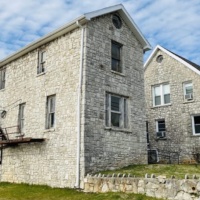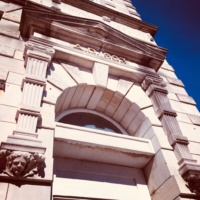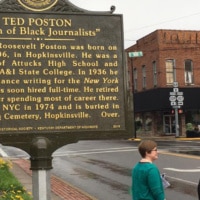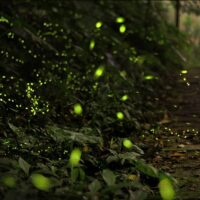In the early 1900s, Hopkinsville’s Chamber of Commerce began using the phrase “Pearl City of the Pennyroyal” as a motto for the city.

It first showed up in chamber literature around 1912, Christian County Historian William T. Turner told Hoptown Chronicle.
The city of Hopkinsville incorporated the motto into its official seal, which is still in use today. Along with the motto, the seal bears an image of the Pennyroyal plant for which this region of Kentucky is named.
Pennyroyal is an herb in the mint family.
In a video she recorded in the spring of 2020 in her backyard, Alissa Keller, executive director of the Museums of Historic Hopkinsville-Christian County, said early white settlers found the plant in great abundance in the region surrounding Hopkinsville.
Keller’s video complemented a take-home kit she offered through the Pennyroyal Area Museum, which is closed because of the novel coronavirus.

“Pennyroyal has a strong fragrance similar to spearmint and was used for centuries to flavor food, wine and herbal teas,” the National Center for Biotechnology Information (NCBI) states in a report on Pennyroyal and its oil, which is an herbal extract. “Pennyroyal extracts were also used as a traditional herb and folk remedy.”
But the Pennyroyal extract in certain quantities is not safe for humans. It has been used to induce abortion, according to numerous scientific publications.
“When taken by mouth, Pennyroyal oil is highly toxic and has been linked to several instances of toxic liver injury and death,” the NCBI report states.
The Pennyroyal plant blooms with bluish flowers in summer. Like most mint plants, it is hearty and can be invasive.
And how did Pennyroyal transition to Pennyrile in our part of the country?
Blame it on the Western Kentucky flavor of the Southern accent, which makes “royal” sound more like “rile.”
Jennifer P. Brown is co-founder, publisher and editor of Hoptown Chronicle. You can reach her at editor@hoptownchronicle.org. Brown was a reporter and editor at the Kentucky New Era, where she worked for 30 years. She is a co-chair of the national advisory board to the Institute for Rural Journalism and Community Issues, governing board past president for the Kentucky Historical Society, and co-founder of the Kentucky Open Government Coalition. She serves on the Hopkinsville History Foundation's board.





